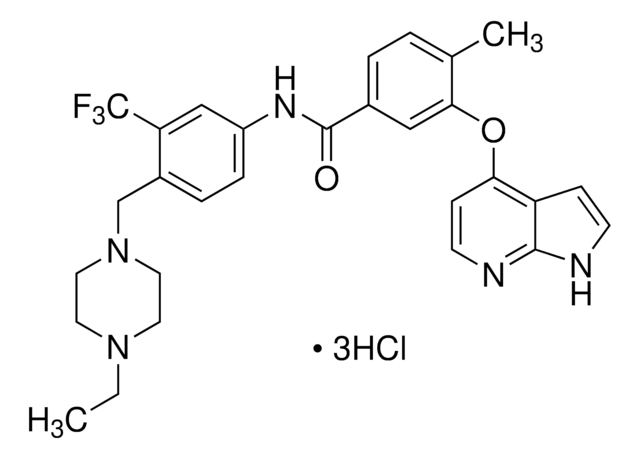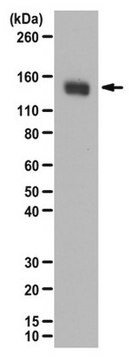ABS45
Anti-phospho-MYPT1 (Thr696) Antibody
from rabbit, purified by affinity chromatography
Synonym(s):
Myosin phosphatase target subunit 1, Myosin phosphatase-targeting subunit 1, Protein phosphatase myosin-binding subunit, myosin phosphatase, target subunit 1, protein phosphatase 1, regulatory (inhibitor) subunit 12
About This Item
Recommended Products
biological source
rabbit
Quality Level
antibody form
affinity isolated antibody
antibody product type
primary antibodies
clone
polyclonal
mol wt
(~130 kDa observed; 115.28 kDa calculated. Uncharacterized bands may be observed in some lysate(s).)
purified by
affinity chromatography
species reactivity
human
species reactivity (predicted by homology)
canine (based on 100% sequence homology), rat (based on 100% sequence homology), primate (based on 100% sequence homology), mouse (based on 100% sequence homology), chicken (based on 100% sequence homology), horse (based on 100% sequence homology), Xenopus (based on 100% sequence homology)
technique(s)
inhibition assay: suitable (Peptide Inhibition Assay)
western blot: suitable
NCBI accession no.
UniProt accession no.
shipped in
wet ice
target post-translational modification
phosphorylation (pThr696)
Gene Information
human ... PPP1R12A(4659)
General description
Specificity
Immunogen
Application
Signaling
Kinases & Phosphatases
Quality
Western Blotting Analysis: 0.1 µg/mL of this antibody was used to detect MYPT1 phosphorylated at Thr696 on 10 µg of Calyculin/Okadaic treated and untreated HEK293 cell lysate.
Target description
Linkage
Physical form
Storage and Stability
Analysis Note
Calyculin/Okadaic treated and untreated HEK293 cell lysates
Other Notes
Disclaimer
Not finding the right product?
Try our Product Selector Tool.
Storage Class Code
12 - Non Combustible Liquids
WGK
WGK 1
Flash Point(F)
Not applicable
Flash Point(C)
Not applicable
Certificates of Analysis (COA)
Search for Certificates of Analysis (COA) by entering the products Lot/Batch Number. Lot and Batch Numbers can be found on a product’s label following the words ‘Lot’ or ‘Batch’.
Already Own This Product?
Find documentation for the products that you have recently purchased in the Document Library.
Our team of scientists has experience in all areas of research including Life Science, Material Science, Chemical Synthesis, Chromatography, Analytical and many others.
Contact Technical Service







